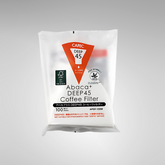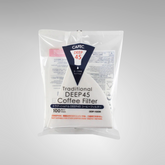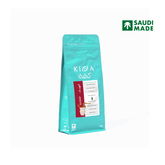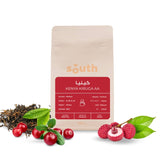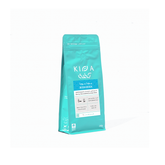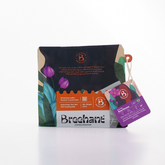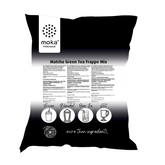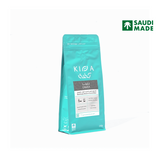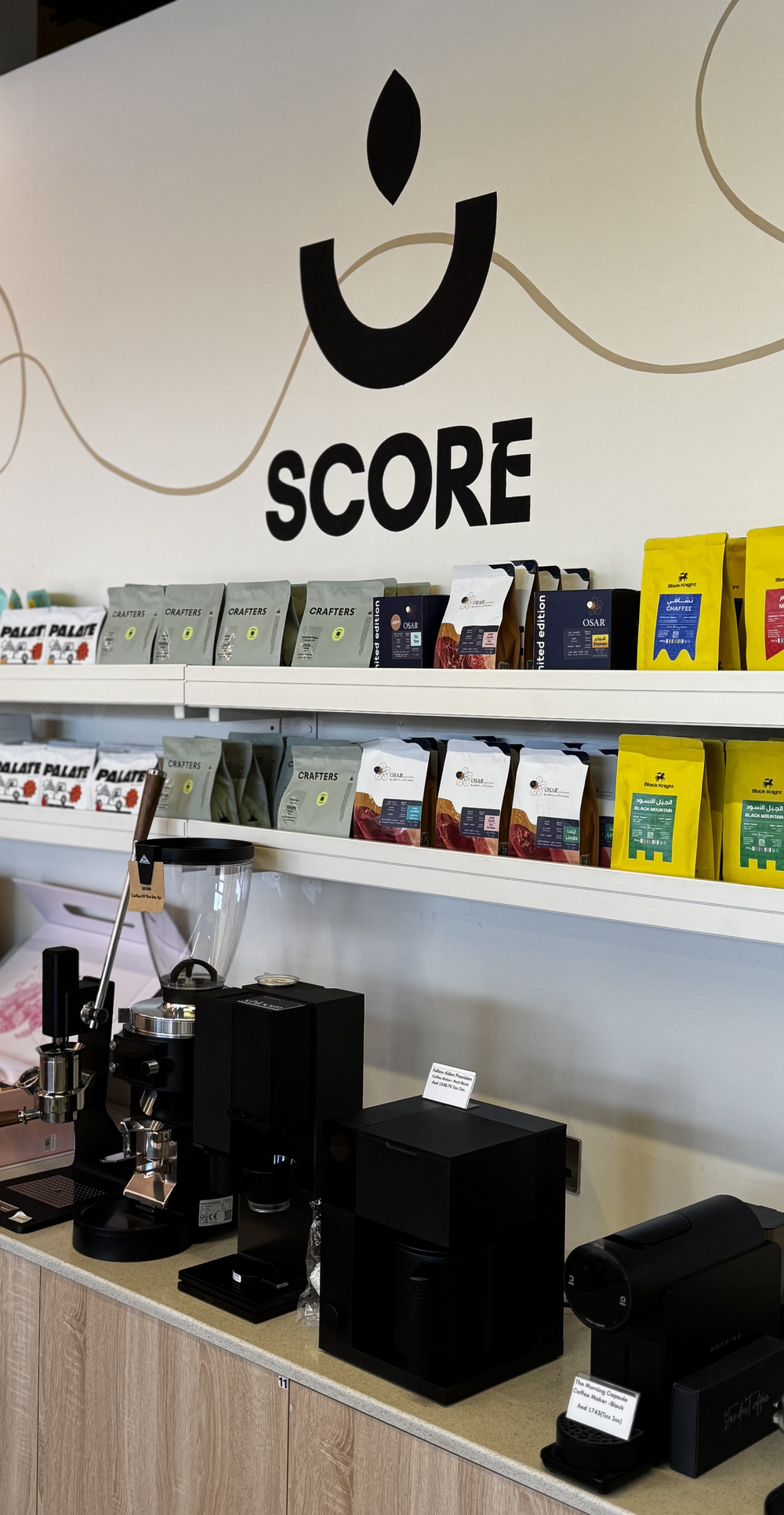Coffee Beans | محاصيل القهوة
You might be interested in: , Cleaning products, Grinders, Coffee Machines, Espresso Machine Tools
-
Vendor:3guys
3guys TOBACCO BEANS- INDONESIAN (250g) Coffee Beans
Central Aceh District Coffee – Indonesia Takengon Processing: WET HULLED Altitude: 1500 - 1550 mFlavors : PIPE TOBACCO Flavor: Rich and smooth, with prominent notes of dark chocolate, cedar, and tobacco. It also includes undertones of earthiness, spice (like cinnamon or clove), and sometimes hints of...-
 75.00
75.00
-
 0.00
0.00
-
 75.00
75.00
- (-0%)
- Unit price
-
 per
per
Save -75.00 -
-
Vendor:Soil Roasters
Soil Roasters-Indonasia Tanah Sumatra 250g Coffee Beans
The Kerinci region of Indonesia is located on the island of Sumatra at an elevation ranging between 1400–1700 meters. This area is well known for its abundant hills and volcanic mountains, especially the historic Mount Kerinci, surrounded by lush green landscapes and fertile volcanic...-
 65.00
65.00
-
 0.00
0.00
-
 65.00
65.00
- (-0%)
- Unit price
-
 per
per
Save -65.00 -
-
Vendor:KUF Roastery
KUF Roastery Ethiopia - Shakiso 250g Coffee Beans
Ethiopia - Shakiso Suggestions: Green apple, jasmine, fruity, rich texture Treatment: Dried Breed: Erlium Region: Qoji Altitude: 1850 - 2100 m-
 65.00
65.00
-
 0.00
0.00
-
 65.00
65.00
- (-0%)
- Unit price
-
 per
per
Save -65.00 -
-
Vendor:Soil Roasters
Soil Roasters- Colombia Serena 250g Coffee Beans
The journey of this Colombian crop begins in the lofty highlands of Huila, at an elevation between 1600 and 1900 meters, where coffee cherries are carefully handpicked from small farms before undergoing an initial fermentation stage that imparts rich and distinctive flavors. The cherries...-
 75.00
75.00
-
 0.00
0.00
-
 75.00
75.00
- (-0%)
- Unit price
-
 per
per
Save -75.00 -
-
Vendor:3guys
3guys COLOMBIA PASSION FRUIT(250g) Coffee Beans
قهوة كولومبيا – باشن فروتالمعالجة: لاهوائي + إنفيوجن باشن فروتالارتفاع: 1400 – 1600مالنكهات: باشن فروت – حلاوة ناعمة من مرتفعات كاستيلو في كولومبيا، وبتقنية تخمير لاهوائي مميزة أُضيفت خلالها نكهات طبيعية من فاكهة الباشن فروت، تأتيك هذه القهوة بتجربة فريدة لا تُنسى.تفوح بعبير الفاكهة...-
 199.00
199.00
-
 0.00
0.00
-
 199.00
199.00
- (-0%)
- Unit price
-
 per
per
Save -199.00 -
-
Vendor:Soil Roasters
Soil Roasters - Yemen Aqiq Harraz 250g Coffee Beans
-
 75.00
75.00
-
 0.00
0.00
-
 75.00
75.00
- (-0%)
- Unit price
-
 per
per
Save -75.00 -
-
Vendor:KUF Roastery
KUF Roastery- Colombia Mango Infused 150g Coffee Beans
Colombian - Mango Suggestions: Mango, Papaya, Peach, Honey Treatment: Infused Breed: Caturra, Castillo Region: Huila Altitude: 1600-1800 m-
 68.00
68.00
-
 0.00
0.00
-
 68.00
68.00
- (-0%)
- Unit price
-
 per
per
Save -68.00 -
-
Vendor:3guys
3guys BRAZIL santa lucia (1000g) Coffee Beans
-
 115.00
115.00
-
 0.00
0.00
-
 115.00
115.00
- (-0%)
- Unit price
-
 per
per
Save -115.00 -
-
Vendor:3guys
3guys Colombia Castillo DECAFE (250g) Coffee Beans
Colombian Coffee : Castillo ( Decaf ) Processing : Decaffeination Altitude : 1300m-1500m Flavors : Caramel, Nutty, Dark Chocolate From the Castillo region of Colombia, this coffee is innovatively brewed with Decaffeination, giving it a bold and unique nutty character.-
 79.00
79.00
-
 0.00
0.00
-
 79.00
79.00
- (-0%)
- Unit price
-
 per
per
Save -79.00 -
-
Vendor:3guys
3guys COLOMBIA STRAWBERRY (250g) Coffee Beans
قهوة كولومبيا – كاستيلو (فراولة)المعالجة: تخمير بالفراولة | الارتفاع: 1400 – 1600مالنكهات: حلاوة كاندي – فراولة من منطقة كاستيلو في كولومبيا، تأتيك هذه القهوة المعالجة بطريقة مبتكرة عبر التخمير مع الفراولة، ما يمنحها طابعًا فاكهيًا جريئًا ومختلفًا.نكهات الفراولة الطازجة تتصدر المشهد، تُكملها حلاوة تشبه...-
 199.00
199.00
-
 0.00
0.00
-
 199.00
199.00
- (-0%)
- Unit price
-
 per
per
Save -199.00 -
-
Vendor:3guys
3guys BRAZIL santa lucia (250g) Coffee Beans
قهوة البرازيل – سانتا لوسياالمعالجة: طبيعية | الارتفاع: حتى 1200مالنكهات: شوكولاتة حلوة – بندق – كراميل حلو من قلب مزارع سانتا لوسيا في البرازيل، وعلى ارتفاع يصل حتى 1200 متر، تنمو هذه القهوة تحت أشعة الشمس، وتُعالج بالطريقة الطبيعية لتعكس دفء الأرض التي جاءت...-
 69.00
69.00
-
 0.00
0.00
-
 69.00
69.00
- (-0%)
- Unit price
-
 per
per
Save -69.00 -
-
Vendor:3guys
3guys ETHIOPIAN CHELECHELE (250g) Coffee Beans
Yirgacheffe Coffee : Ethiopian Chechele Processing : Natural Altitude : 1800-1850 m Flavors :Blueberry , Cherry , Hibiscus and White Grape From the region Yirgacheffe of Ethiopian , this coffee is innovatively brewed with natural process, giving it a Floral and Fruity Flavor.-
 84.00
84.00
-
 0.00
0.00
-
 84.00
84.00
- (-0%)
- Unit price
-
 per
per
Save -84.00 -
-
Vendor:OLALA
OLALA Grape Jam – Caturra – 125 grams Coffee Beans
Coffee Information Country: Colombia Variety: Caturra Processing: Anaerobically dried Flavor Notes: Grape, red fruits, sweetness Altitude: 1750 m Recommended Recipes Pour-over Coffee dose: 18 g Water: 270 ml Temperature: 90°C Extraction time: 2:40 min Espresso Coffee dose: 18 g Water: 32 ml Temperature: 90°C...-
 75.00
75.00
-
 0.00
0.00
-
 75.00
75.00
- (-0%)
- Unit price
-
 per
per
Save -75.00 -
-
Vendor:OLALA
OLALA Box Joker – Blend – Dried – Washed- 5 pcs x 15grams Drip Bags
A blend of chocolate, fruit, hazelnut that fits the filter and espresso Product Information Treatment: Dried - Washed Suggestions : Chocolate, Fruit, Hazelnut-
 43.00
43.00
-
 0.00
0.00
-
 43.00
43.00
- (-0%)
- Unit price
-
 per
per
Save -43.00 -
-
Vendor:Black Knight
Black Knight Alshikha 250g Coffee Beans
-
 47.00
47.00
-
 0.00
0.00
-
 47.00
47.00
- (-0%)
- Unit price
-
 per
per
Save -47.00 -
-
Vendor:OLALA
OLALA Jabal Al-Nabii – Yemen – Dried Typica – 125grams Coffee Beans
Coffee Information Country: Yemen Variety: Typica Processing: Dried Flavor Notes: Black grape, grapefruit, orange, milk chocolate Altitude: 1800 m Recommended Recipes Pour-over Coffee dose: 18 g Water: 270 ml Temperature: 90°C Extraction time: 2:40 min Espresso Coffee dose: 18 g Water: 32 ml Temperature:...-
 81.00
81.00
-
 0.00
0.00
-
 81.00
81.00
- (-0%)
- Unit price
-
 per
per
Save -81.00 -
-
Vendor:Cazador
Cazador- Colombia Grape 200g
Cazador Colombia Grape 200g offers a premium selection of high-quality tobacco known for its rich, naturally sweet grape flavor profile. This carefully harvested blend provides a smooth, balanced smoking experience ideal for connoisseurs seeking depth and authenticity. Its 200g packaging ensures long-lasting enjoyment, making...-
 115.00
115.00
-
 0.00
0.00
-
 115.00
115.00
- (-0%)
- Unit price
-
 per
per
Save -115.00 -
-
Vendor:OLALA
OLALA Box Salvador – Vista – Washed – 5 pcs x 15grams Drip Bags
The Salvadoran crop features hints of brown sugar, caramel, cherry, passion fruit, and dark chocolate Product Information Country : El Salvador Breed: Bourbon Treatment: Washed Suggestions: Dark chocolate, cherry, caramel, brown sugar, passion fruit Altitude : 1500 m-
 44.00
44.00
-
 0.00
0.00
-
 44.00
44.00
- (-0%)
- Unit price
-
 per
per
Save -44.00 -
-
Vendor:OLALA
OLALA Al-Arda – Saudi – Anaerobic – Typica – 125grams Coffee Beans
Premium Saudi Coffee – Anaerobically Dried Process Coffee Information Country: Kingdom of Saudi Arabia Variety: Typica Processing: Anaerobically dried Flavor Notes: Strawberry, dried fruits, raisin, grape, floral Altitude: 1600 m Recommended Recipes Pour-over Coffee dose: 18 g Water: 270 ml Temperature: 90°C Extraction time:...-
 75.00
75.00
-
 0.00
0.00
-
 75.00
75.00
- (-0%)
- Unit price
-
 per
per
Save -75.00 -
-
Vendor:Breehant
Breehant - Ethopia Kafa Coffee Beans (250 gm)
A Ethiopia crop, planted at an altitude of between 1800 -2000 meters above sea level, and treated with the natural method. Suggestions Chocolate, Bergamot, Caramel, Jasmine Commandments for Use – Use 15 days after the date of the chickpeas – Store at a temperature...-
 55.00
55.00
-
 0.00
0.00
-
 55.00
55.00
- (-0%)
- Unit price
-
 per
per
Save -55.00 -
-
Vendor:OLALA
OLALA Box Rodriger – Colombia – Carbonic Maceration – 5 pcs x 15grams- Drip Bags
-
 52.00
52.00
-
 0.00
0.00
-
 52.00
52.00
- (-0%)
- Unit price
-
 per
per
Save -52.00 -
-
Vendor:Cazador
Cazador - Colombia Strawberry (200g)
Cup Notes: Strawberry, Cake, Candy Variety: Castillo, Caturra, Colombia Process: Fruit FermentedAltitude: 1400 - 1600 MASL Region: HuilaBrewing Recommendations: Filter, Drip Methods-
 115.00
115.00
-
 0.00
0.00
-
 115.00
115.00
- (-0%)
- Unit price
-
 per
per
Save -115.00 -
-
-
Vendor:OLALA
OLALA Higuarin – Colombia – Dried – 250 grams Coffee Beans
Dried Colombian Coffee – Notes of Dried Fruits, Cinnamon, Chocolate & Brown Sugar Coffee Information Country: Colombia Varieties: Tabi, Geisha Processing: Dried Flavor Notes: Dried fruits, cinnamon, chocolate, brown sugar Altitude: 1800–2100 m Recommended Recipes Pour-over Coffee dose: 18 g Water: 270 ml Temperature:...-
 69.00
69.00
-
 0.00
0.00
-
 69.00
69.00
- (-0%)
- Unit price
-
 per
per
Save -69.00 -
-
Vendor:Breehant
Breehant- Colombia Lapradera (250g) Coffee Beans
A premium Colombian crop, grown at an altitude of 1,400 to 14,500 meters above sea level and processed using the honey method. Suggestions: - peach - Cream - Vanilla - Yasmine Usage Instructions: - Use after 15 days from the date of chickpeas. Store...-
 94.00
94.00
-
 0.00
0.00
-
 94.00
94.00
- (-0%)
- Unit price
-
 per
per
Save -94.00 -
-
Vendor:Kiffa
Kiffa Roastery- Alhaif 250g
Experience the rich flavors of Kiffa Roastery’s Alhaif blend, expertly roasted to bring out its distinctive aroma and balanced profile. This 250g pack offers a carefully crafted coffee experience ideal for those who appreciate nuanced taste and refined quality. Perfect for brewing methods that...-
 38.00
38.00
-
 0.00
0.00
-
 38.00
38.00
- (-0%)
- Unit price
-
 per
per
Save -38.00 -
-
Vendor:South Roastery
South Roastery - Kenya Kiruga AA 250g
Kenya Kiruga AA from South Roastery offers a distinguished coffee experience characterized by its bright acidity and complex floral and citrus notes. Sourced from high-altitude Kirinyaga, this specialty-grade 250g roast presents a well-balanced cup with hints of blackcurrant and honey, ideal for those who...-
 47.62
47.62
-
 0.00
0.00
-
 47.62
47.62
- (-0%)
- Unit price
-
 per
per
Save -47.62 -
-
Vendor:Cazador
Cazador Kenya Swahili 250g
Cazador Kenya Swahili 250g offers a refined coffee experience crafted from premium Kenyan beans. This selection features bright acidity and vibrant citrus notes, complemented by a rich, full body that delivers a balanced cup. Ideal for those seeking an expertly roasted coffee with distinctive...-
 55.00
55.00
-
 0.00
0.00
-
 55.00
55.00
- (-0%)
- Unit price
-
 per
per
Save -55.00 -
-
Vendor:OLALA
OLALA Joker – Blend – Dried – Washed 250 grams Coffee Beans
Blend Coffee – Chocolate, Fruit & Hazelnut Notes – Suitable for Filter and Espresso Coffee Information Processing: Dried – Washed Flavor Notes: Chocolate, fruits, hazelnut Recommended Recipes Pour-over Coffee dose: 18 g Water: 270 ml Temperature: 90°C Extraction time: 2:40 min Espresso Coffee dose:...-
 55.00
55.00
-
 0.00
0.00
-
 55.00
55.00
- (-0%)
- Unit price
-
 per
per
Save -55.00 -
-
Vendor:South Roastery
South Roastry Drip Bags Salvador La Majda Filter 5pc-15g
Experience the refined taste of Salvador La Majda with South Roastry’s expertly crafted drip bags. Each filter bag contains 15g of premium coffee, perfectly portioned for a clean and balanced Pour-Over brew. This 5-piece set ensures convenience without compromising quality, delivering the intricate flavors...-
 30.00
30.00
-
 0.00
0.00
-
 30.00
30.00
- (-0%)
- Unit price
-
 per
per
Save -30.00 -
-
Vendor:Breehant
Breehant - Brazil Mogiana (250g)
Mogiana A Brazilian coffee crop from the Mogiana region, characterized by its high body and dried processing. Grown at an altitude of 800 to 1,200 meters above sea level, it is a specialty coffee product offered by Brihant Roastery. Hints : Vanilla, Caramel, Honey, Hazelnut-
 55.00
55.00
-
 0.00
0.00
-
 55.00
55.00
- (-0%)
- Unit price
-
 per
per
Save -55.00 -
-
Vendor:South Roastery
South Roastry Drip Bags Rosa Marina Filter 5pc-15g
Experience refined coffee brewing with South Roastry Drip Bags Rosa Marina Filter. Each pack contains five 15g drip bags designed for single servings, ensuring a precise and convenient pour-over method. Crafted to highlight the unique flavors and aroma of Rosa Marina coffee, these drip...-
 30.00
30.00
-
 0.00
0.00
-
 30.00
30.00
- (-0%)
- Unit price
-
 per
per
Save -30.00 -
-
Vendor:Black Knight
Black Knight Baoshan China 250g Coffee Beans
-
 63.00
63.00
-
 0.00
0.00
-
 63.00
63.00
- (-0%)
- Unit price
-
 per
per
Save -63.00 -
-
Vendor:Cazador
Cazador Colombia Extra Gum 200g
Cazador Colombia Extra Gum 200g offers a robust, long-lasting chewing experience crafted with premium ingredients. Its carefully balanced formula provides refreshing flavor while maintaining a smooth texture, making it ideal for those who seek both taste and endurance in their gum. Perfect for on-the-go...-
 95.00
95.00
-
 0.00
0.00
-
 95.00
95.00
- (-0%)
- Unit price
-
 per
per
Save -95.00 -
-
Vendor:Kiffa
Kiffa Roastery - Uganda Boda Boda (250g)
With hints of ber Kiffa Roastery’s Uganda Boda Boda (250g) delivers a refined coffee experience rooted in Uganda’s rich coffee heritage. Carefully sourced and expertly roasted to highlight the region’s distinctive fruity and wine-like notes, this coffee offers a balanced body with vibrant acidity....-
 68.00
68.00
-
 0.00
0.00
-
 68.00
68.00
- (-0%)
- Unit price
-
 per
per
Save -68.00 -
-
Vendor:Breehant
Breehant - El Salvador Lamajada (250g) Coffee Beans
La Majada A classic La Majada Salvador coffee with a balanced flavor and intense sweetness. Grown at 1,300 and 1,400 meters above sea level, it is processed using the washed method and is offered as part of the specialty coffee range from Brihant Roastery....-
 55.00
55.00
-
 0.00
0.00
-
 55.00
55.00
- (-0%)
- Unit price
-
 per
per
Save -55.00 -
-
Vendor:Breehant
Breehant - Brazil Rosa Morena (250g)
Brazilian crop from the Alta Mogiana region It has a rich, soft acidic texture, mild sweetness and floral suggestion, Planted at an altitude of 800 to 1200 meters and treated with drying Instructions for use: - Use 8 days after the date of chickpeas...-
 55.00
55.00
-
 0.00
0.00
-
 55.00
55.00
- (-0%)
- Unit price
-
 per
per
Save -55.00 -
-
Vendor:Pirates Of Coffee
Pirates of Coffee: Kenya Black Mamba (250g)
Black Mamba is a premium AA-graded coffee, produced by the Marua Farmers Cooperative in the heart of Kenya's Marua region. This washed-processed coffee displays pronounced tropical fruit notes paired with a comforting tea-like finish. The Cup pushes the boundaries with deep fruit...-
 70.00
70.00
-
 0.00
0.00
-
 70.00
70.00
- (-0%)
- Unit price
-
 per
per
Save -70.00 -
-
Vendor:Pirates Of Coffee
Pirates of Coffee: Colombia Magic Potion (250g)
Magic Potion is a masterpiece crafted in Risaralda, Colombia by the renowned Julio Madrid. Complex to another level, with a nuance of tropical fruits changing with almost every sip. Magic is what we get - when Julio produces this castillo varietal with...-
 110.00
110.00
-
 0.00
0.00
-
 110.00
110.00
- (-0%)
- Unit price
-
 per
per
Save -110.00 -
-
Vendor:OLALA
OLALA Rodriger – Colombia – Carbonic Maceration – 250 grams Coffee Beans
Premium Colombian Coffee – Special Processing Coffee Information Country: Colombia Variety: Castillo Processing: Carbonic Maceration Flavor Notes: Berries, grape, cola, green apple, pineapple Altitude: 2000 m Recommended Recipes Pour-over Coffee dose: 18 g Water: 270 ml Temperature: 90°C Extraction time: 2:40 min Espresso Coffee...-
 85.00
85.00
-
 0.00
0.00
-
 85.00
85.00
- (-0%)
- Unit price
-
 per
per
Save -85.00 -
-
Vendor:Pirates Of Coffee
Pirates of Coffee: Colombia Cinn City Anaerobic Honey ( 250g)
This unique and aromatic infused coffee from the Quimbaya region of Colombia is produced by Edwin Noreña at Campo Hermoso farm. The cinnamon-infused anaerobic honey process brings out winter holiday vibes with cinnamon and gingerbread notes combined with the sugary sweet undertones...-
 100.00
100.00
-
 0.00
0.00
-
 100.00
100.00
- (-0%)
- Unit price
-
 per
per
Save -100.00 -
-
Vendor:Pirates Of Coffee
Pirates of Coffee: Pacamara - Nicaragua (250g)
This rare Pacamara varietal coffee is produced by Finca La Bendicion in Nueva Segovia, Nicaragua. This varietal paired with a natural drying process brings out juicy and sweet, fruit-dominant notes that result in a highly enjoyable cup. Tasting Notes: Honeydew Melon, Pink Lemonade, Green Tea,...-
 70.00
70.00
-
 0.00
0.00
-
 70.00
70.00
- (-0%)
- Unit price
-
 per
per
Save -70.00 -
-
Vendor:Score Store
Matcha Frappe Mix - (1kg)
The Matcha Green Tea Frappé Mix offers a slightly sweet taste, characteristic of Japanese matcha green tea. Matcha is a finely ground powder of green tea leaves, which provides a vibrant flavour. This blend combines the liveliness of green tea with a subtle sweetness, creating...-
 110.00
110.00
-
 0.00
0.00
-
 110.00
110.00
- (-0%)
- Unit price
-
 per
per
Save -110.00 -
-
Vendor:Score Store
Arriyadh Roastery- Instant Coffee- Shaybah Field
Light Roast Freeze Dried Coffee. Discover the art of specialty freeze-dried coffee, where time stands still and flavor reigns supreme. This exquisite method captures the essence of freshly brewed coffee, preserving its vibrant aroma and rich taste through a delicate process of sublimation. Each...-
 62.00
62.00
-
 0.00
0.00
-
 62.00
62.00
- (-0%)
- Unit price
-
 per
per
Save -62.00 -
-
Vendor:Black Knight
Black Knight - Maria | Costa Rica (250g) Coffee Beans
Notes: Kiwi, Passion Fruit, White Chocolate-
 68.00
68.00
-
 0.00
0.00
-
 68.00
68.00
- (-0%)
- Unit price
-
 per
per
Save -68.00 -
-
Vendor:Black Knight
Black Knight - Ronaldo - Colombia 250g
Notes: Kiwi, Pawpaw, Mango, Citrus, Pineapple-
 89.00
89.00
-
 0.00
0.00
-
 89.00
89.00
- (-0%)
- Unit price
-
 per
per
Save -89.00 -
-
Vendor:Kiffa
Kiffa Roastery- Cauca 250g
Kiffa whole coffee bean crops, from the fruit to your cup of coffee 🤍 With hints of bl Experience the refined taste of Kiffa Roastery’s Cauca 250g, sourced from Colombia’s renowned Cauca region. This premium coffee delivers a balanced profile with vibrant acidity and...-
 65.00
65.00
-
 0.00
0.00
-
 65.00
65.00
- (-0%)
- Unit price
-
 per
per
Save -65.00 -
-
Vendor:Cazador
Cazador- Ethiopia Tang 250g
Cup Notes: Jasmine, Sweet Mandarin, Peach, Syrupy Body Variety: Heirloom Process: Natural Altitude: 1,800 - 2,000 MASL Region: Yirgacheffe Brewing Recommendations: All Brewing Methods-
 65.00
65.00
-
 0.00
0.00
-
 65.00
65.00
- (-0%)
- Unit price
-
 per
per
Save -65.00 -
-
Vendor:Pirates Of Coffee
Pirates Of Coffee: Nutty Espresso-Brazil Honey 250g
Tasting Notes: Chocolate, Hazelnut Spread, Caramel Cup score: 82.50 ☕-
 78.00
78.00
-
 0.00
0.00
-
 78.00
78.00
- (-0%)
- Unit price
-
 per
per
Save -78.00 -
-
Vendor:Almakha
Almakha Brazil - 250g
ESPRESSO – ALMAKHA BLEND ORIGIN – Brazil Note Of Rich Chocolate, Nutella, Almond and cocoa VARIETY - Yellow Catuai PROCESSING – Natural METHODS – Espresso ALTITUDE – 9000 m.a.s.l-
 56.25
56.25
-
 0.00
0.00
-
 56.25
56.25
- (-0%)
- Unit price
-
 per
per
Save -56.25 -

